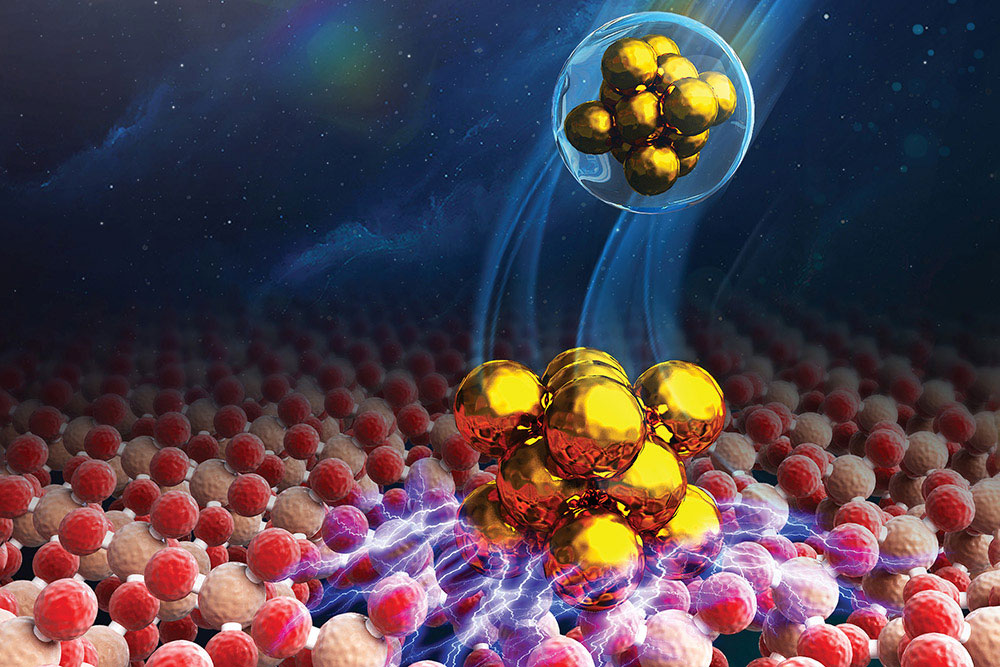Researchers Create Nanoparticles to Address Environmental Problems
April 6, 2022
The following article was originally published by Stony Brook University. To develop a new generation of gold nanoparticles and measure their catalytic performance, the research team leveraged several world-leading facilities at the Center for Functional Nanomaterials (CFN), including Proximal Probes, Electron Microscopy, and Materials Synthesis & Characterization. The instruments in these facilities enabled the researchers to analyze the physical, chemical, and electronic structure of key materials at the nanoscale. CFN is a U.S. Department of Energy (DOE) Office of Science User Facility at DOE’s Brookhaven National Laboratory. For more information on Brookhaven’s role in this research, contact Stephanie Kossman (skossman@bnl.gov, 631-344-8671).
Stony Brook researchers, in collaboration with Brookhaven National Lab (BNL) scientists and the U.S. Air Force Laboratory, have developed a new generation of nanoparticles to address environmental problems. In their recent work, featured on the cover of Journal of Physical Chemistry C, Alexander Orlov, a professor in the Department of Materials Science and Chemical Engineering in the College of Engineering and Applied Sciences, his students and collaborators have created ultra small gold nanoparticles that can remove carbon monoxide from the air.
The novelty of this work originates from a very special method of making such nanoparticles, where gold vapor infuses super cold helium droplets and creates a jet of highly uniform catalysts. The unique equipment used to produce liquid helium is based at the U.S. Air Force Lab, with other research conducted at BNL’s Center for Functional Nanomaterials, guided by Mingzhao Liu and Xiao Tong.
Haotian Yang, a PhD student in the Orlov lab and first author of the published article “Enhancing CO Oxidation Activity via Tuning a Charge Transfer Between Gold Nanoparticles and Supports,” has proposed a new explanation for activity of gold toward carbon monoxide oxidation. This work can have significant implications for designing better nanomaterials to address pressing environmental problems.
More information about this research can be found here.
2022-19538 | INT/EXT | Newsroom










